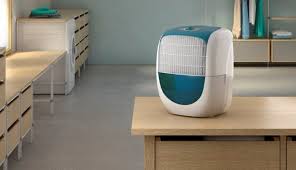This small sized pesky crawly is not dangerous, but it can turn into a menace. From books and clothes to wallpaper, this little creature can chew through all.
Since silverfish are nocturnal and secretive it can be quite difficult to catch them in the act. Nonetheless, if you spot unexplained holes in your wallpaper or books and black pepper like small droppings near them, then you can be sure that you have silverfish infestation in your home.
Ways to Get Rid of Silverfish From Your Home
If you have silverfish infestation, it is best to get rid of it before they chew away your favorite clothes and books.
Here’s what you can do to get rid of these scurrying pesky crawlies:
1. Reduce Humidity
Silverfish thrive and breed in damp and dark places like attics, basements, bathrooms, and kitchens. So, to prevent and control a silverfish infestation, you need to reduce humidity from your home. Here are some ways to do this:
- Invest in a dehumidifier
- Ventilate your attic
- Make sure your basement is dry after a heavy rainfall or a snow melt
- Fix all your leaky pipes and faucets

Use a dehumidifier to reduce silverfish population
2. Use Caulk or Silica Gel to Seal Crawlspaces
These creatures can crawl into the smallest crawlspaces and hide. Therefore, use caulk or silica gel to seal crawlspaces in your homes like small holes and cracks.
3. Make Sure They Have No Access To Food
Silverfish love starchy food like cereals and grains. They also enjoy feeding on paper and wall paper glue. So, to say goodbye to these unwanted house guests, you have to make sure they have no access to their favorite delights. You can do this by:
- Storing all your starchy food items in air-tight jars and containers
- Avoid keeping books and magazines in your attic, basement or garage
- Store cardboard boxes on shelves instead of putting them on the floor where they are likely to get damp.
- If you have starched linens, cotton and silk clothes, keep them in plastic bags and seal them properly.
Opt for paint instead of wallpaper. However, if you home is already wallpapered, to avoid silverfish licking through the paste, repair the loose spots and air bubbles.
4. Maintain Sanitation
Sanitation is a must! You must keep your bathroom and kitchen clean to avoid silverfish infestation. Mopping can help keep the floor clean and dry.
5. Vacuum Regularly
Vacuum your home regularly to ensure there are no food crumbs on the floor for them to feast on. Make sure you also vacuum around baseboards and cracks to remove and suck silverfish eggs away. Did you know a female silverfish can produce up to 2 to 20 eggs per day? Therefore, if you vacuum regularly, you can reduce and control silverfish infestation in your home greatly.
6. Regulate Heat and Light
Silverfish don’t like heat or light. They prefer temperatures between 70 and 80°F. Therefore heat the infested room to above 80°F or cool it to 60°F. Also, you can remove the curtains in your home during

Remove clutter to spot silverfish
daytime to allow the sunlight to penetrate inside.
7. Keep Your Home Clutter-Free
Silverfish are tempted to take up residence in dark and cluttered places where nobody can see them. So, it is advisable to keep your home clutter free. This means if you have piles of old clothes in the basement, old books and broken furniture that you are never going to use, it’s best to throw them instead of hoarding them and unintentionally providing a place for silverfish to harbor.
8. Use Insecticides to Kill Them
If you feel you have large silverfish infestation in your home, then you can always resort to using insecticides like diatomaceous earth, boric acid or sprays containing liquid pyrenthrin.
Diatomaceous earth is food-grade powdery substance and highly effective in getting rid of silverfish. You can sprinkle it in cabinets and other dark areas of your home where you think silverfish could be hiding. Since it is food-grade, it is not harmful. However, when cleaning up diatomaceous earth you must wear a mask as there can be airborne particles that can cause shortness of breath.

No Comments